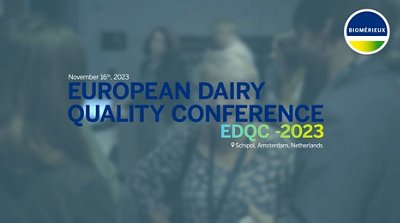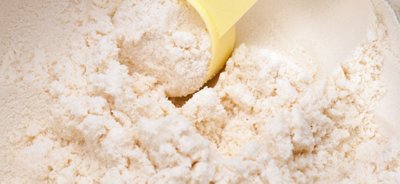FDA Calls for Enhanced Safety Measures in Letter to Powdered Infant Formula Industry - What Does it actually Mean in Five Steps or Less?
March 15th, 2024
5 questions to Jack van der Sanden, International Food Safety Advisor

In March 2023, the US Food Drug and Administration sent a “call to action” letter to manufacturers, packers, distributors, exporters, importers, and retailers of infant formula industries.
We interviewed bioMérieux’s Food Safety Advisor, Jack van der Sanden about the letter and what it means in concrete terms for the infant formula industry.
INTERVIEWER: Hi Jack, now that you've read the letter, what are your main conclusions and how would you sum it up in five points?
JACK: I have read their letter with great interest, and it raises some key points. During my travels in the global dairy industry, I have come across enough examples to confirm : If you are in the infant formula business, please take note of the USFDA letter!
The USFDA mentions five areas of concern and here are some of my thoughts:
1. Water in Dry Production
If we are in the “dry game”, water is our enemy. Alas, we still need to clean and sanitize our dry equipment and sometimes wet washing is the only option. This means that the design of our cleaning systems is critical. Essentially, if we clean anything wet, we will need to make time for a “dry-out” step (ideally, in a dedicated dry-out room). I know this can be painful (time is money), but a validated “dry out” step is essential before we use the equipment in production.
2. Implement a Robust Environmental Monitoring Program
I have been promoting environmental monitoring (EM) for some time now and to be effective, a monitoring plan needs to be designed well. A good EM plan is risk-based and targeted. Swabbing should focus on the areas that are the highest risk to the product and target the sample points where we know pathogens can hide.
Enterobacteriaceae monitoring is very useful to give us a good view of the hygiene standard in our plant but does not correlate well with Cronobacter spp. detections. In most dairy factories, Cronobacter spp. is still found when the Enterobacteriaceae counts are very low.
3. Corrective Action
If we start looking for pathogens in our factory and/or our product, we start looking for something dangerous. It’s like going on a “bear hunt”! So, if we bump into a bear, it is too late to start thinking about our next step. This means that we need to be prepared and have a response plan before we find a pathogen, and our corrective actions should reflect where we have found the pathogen; i.e. risk-based.
4. Supply Chain Controls
The intensity of our supply chain controls should match the use of the ingredient. If we add the ingredient to the mix after the validated kill step, we will need to increase our raw material and supply chain controls. Our HACCP should identify all these ingredients.
When we are making infant formula, we are feeding the most treasured people on the planet, and we should source our ingredients with the mindset of a 3 Michelin star chef.
5. Identify All Relevant Biological Hazards
Currently, Cronobacter spp. is seen as a high-risk pathogen for infants <12 months of age. Sometimes this leads operators to believe that Cronobacter spp. is not important for any of the other products and blends that are made in the factory. I have seen operators monitor for Cronobacter spp. during IF campaigns only and stop monitoring for Cronobacter spp. when they are making a non-IF product.
My approach is to set the environmental monitoring program based on the highest risk product and keep it running, regardless of what we make. Remember, we monitor the environment to verify that our food safety controls are working, so the results will tell us whether we are “fit for purpose”, that is, ready to make our infant formula at any time.
---
Jack
Disclaimer: This article is my opinion and does not represent the opinions of my employer(s)
Curious to find more?



